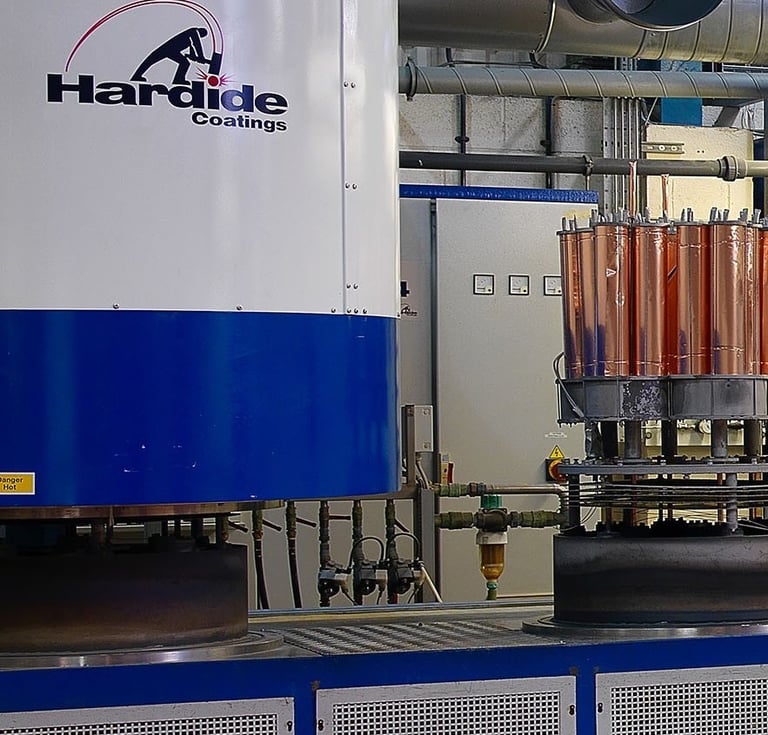New independent testing has proven that Hardide-A tungsten carbide/tungsten metal matrix composite coating improves the fatigue life of metal components by 4.5% when compared to uncoated substrates.
Hardide-A also eliminates the need for costly secondary shot peening making the coating a significant advancement in materials optimisation for the aerospace and other industries where fatigue debit of surface coated metals is a problem.
The tests were conducted by Westmoreland Mechanical Testing and Research Ltd (WMTR), a leading aerospace qualified testing laboratory in the UK and USA.
WMTR used the Rotating Bend Fatigue test method complying to BS ISO 1143:2010. This test is considered to be the most sensitive to the effects of surface treatment on fatigue properties. Samples of S99 steel were coated with Hardide-A to a thickness of 63-70 microns and hardness of ~950 Vickers, which are mid-value thickness and hardness properties for this coating type. The test was discontinued after 15 million cycles.
Traditionally, the fatigue debit after hard coatings such as hard chrome plating (HCP) and HVOF coatings have been applied can be as much as 60% and only following shot peening of the coated surface can this be reduced to around a 20% debit. The Hardide-A coating recorded a fatigue life increase of +4.5% after coating without any need for shot peening. The Wöhler S-N curve for the coated samples is clearly positioned above the uncoated control samples’ curve by ~40 MPa throughout the whole range of the N cycles to failure.
Fatigue debit of surface-coated metals has been a long-standing problem for the aerospace industry – Hardide-A was developed specifically to meet the needs of the sector. This environmentally compliant and technically superior replacement for HCP and HVOF coatings provides enhanced protection against corrosion and chemically aggressive media, wear, galling, fretting and fatigue.
Dr Yuri Zhuk, technical director at Hardide Coatings commented: “Metal fatigue is an enduring problem in aerospace as well as for the steam, and industrial gas turbines industries and we recognised the value in commissioning independent testing to verify the fatigue advantages of Hardide-A.
“The positive 4.5% improvement to fatigue life provides the detailed analysis and assurance that our solution is an improved alternative to traditional HCP and HVOF coatings. Unlike these other coatings, Hardide-A has no through micro-porosity, so creating an excellent barrier against corrosion as well as improving fatigue performance.”
Hardide nanostructured coatings have been approved by Airbus, BAE Systems and Leonardo Helicopters. Applied by low temperature chemical vapour deposition (CVD), they can coat both internal and external surfaces, and complex geometries. Hardide coatings can be applied to a wide range of metallic substrates including ferrous and nickel-based alloys, and most grades of stainless and carbon steels. This enabling technology is proven to offer dramatic improvements in component life, particularly when applied to components that operate in very aggressive environments. This results in cost savings through reduced downtime and increased operational efficiency.
Note to editors:
Hardide Coatings is a Hardide plc (LON:HDD) group company. It develops, manufactures and applies advanced tungsten carbide coatings to a wide range of engineering components. Its patented technology is unique in combining, in one material, a mix of toughness and resistance to abrasion, erosion and corrosion together with the ability to coat accurately interior surfaces and complex geometries.







































